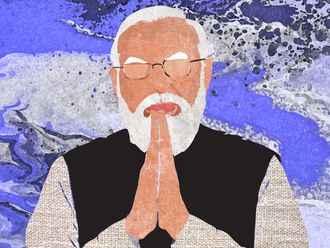Preparations are underway for the convening of an Arab League summit in Tunisia at the end of March. This annual event has often mirrored the state of the Arab world in terms of growing internecine differences, polarisation, weak political coordination and even weaker economic integration, in spite of the verbose final communiques that shy away from reality.
This year’s summit, at the level of Arab leaders, is likely to witness behind-the-scene efforts to restore Syria’s membership to the pan-Arab entity. Damascus had its membership “frozen” in November 2011 — nine months after a popular grass-roots uprising broke out in southern Syria, calling for democracy, human rights and rule of law. The government’s reaction to these peaceful demands was brutal and that was many months before foreign involvement in the crisis began to take place.
The regional circumstances surrounding the eruption of the Syrian uprising are important to note. It was in 2011 that the so-called Arab Spring, a term given by western pundits to popular revolts that broke out against sitting regimes in Tunisia, Egypt, Libya and Yemen, took the region and the world by surprise. Now and after eight tumultuous years on, public opinion remains divided over the true nature of these revolts and if they were stirred as part of a foreign conspiracy.
Certainly, each case needs to be investigated separately. But the scars of the uprisings that brought down the regimes in Tunisia and Egypt — Libya remains a controversial and deeply divisive issue because of Nato’s intervention — are visible across the region until today.
Syria’s crisis path has been convoluted at best; and it remains so today. The peaceful popular uprising ceased to be as foreign extremists began pouring into the country from all over the world. The Syrian crisis became a major source of polarisation in the region and beyond. Tens of armed groups, mostly with Islamist leanings, dotted the Syrian map. A number of countries provided financial and military support to some of these groups. So did Turkey, the United States and other western countries. By the end of 2012, the peaceful uprising had been replaced by a vicious armed rebellion whose agenda varied from that of the Syrian political opposition in exile.
As various armed militias fought the government and then each other over territory, a major shift in the conflict took place when Daesh appeared on the scene. From then on, the Syrian conflict changed trajectory and multiple players found themselves caught in what has become a Syrian quagmire. With the US leading an anti-Daesh alliance, which had become a real threat to the region at large, the appetite for regime-change was lost.
Russia’s military intervention in the conflict in 2015 changed the course of the conflict once again. The regime was saved and it began reversing its territorial losses. But Syria had become a battleground for proxy wars. Turkey used remnants of the Free Syrian Army (FSA) to fight the Kurdish YPG/SDF in northeastern Syria. The US had established bases in that region, supported the Kurds who spearheaded the fight against Daesh in Raqqa, Der Ezzour and elsewhere. By 2017, Daesh had lost both territory and influence in both Iraq and Syria. But the threat was not over.
Political solution
Also, by 2017, it became apparent that Syrian President Bashar Al Assad had survived. Russia, Iran and Turkey provided an alternative political course, through Astana, to arrive at a political solution. The US, under President Donald Trump, had no clear strategy on Syria. It was one conflict that Trump wanted nothing to do with — thus his surprise decision last month to withdraw completely.
By then, Russia and Iran had expanded their influence in Syria. Tehran’s ties with Damascus were especially worrying for both Israel and most Gulf states. It was time that a new approach to the Syrian crisis was adopted by Arab countries.
This is why the Arab League summit in Tunisia in March will be mostly about Syria. The UAE and Bahrain recently reopened their embassies in Damascus and Jordan was taking major steps to normalise ties with Syria. Egypt, Algeria, Iraq and Lebanon are reportedly working to restore Syria’s membership to the Arab League.
While the outcome of such efforts hangs in the balance, there is a need to bring Syria back to the Arab fold in the hope of creating some distance between Damascus and Tehran. Russia can help smoothen the path by enabling a political process in Syria that could lead to reconciliation and future reconstruction.
But there are major hurdles as well. The US flip-flop on its military presence in Syria has baffled both allies and foes. The fate of hundreds of thousands of Syrian political prisoners as well as millions of displaced persons and refugees require regional and international efforts. And the file of war crimes and crimes against humanity during the last eight years will remain open, divisive and controversial for years.
Restoring Syria’s membership to the Arab League should not overshadow all of the above concerns. The rehabilitation of the political system in Syria will take time. But its eventual return to the Arab League is a step in the right direction that would begin the long and arduous healing process.
Osama Al Sharif is a journalist and political commentator based in Amman.











